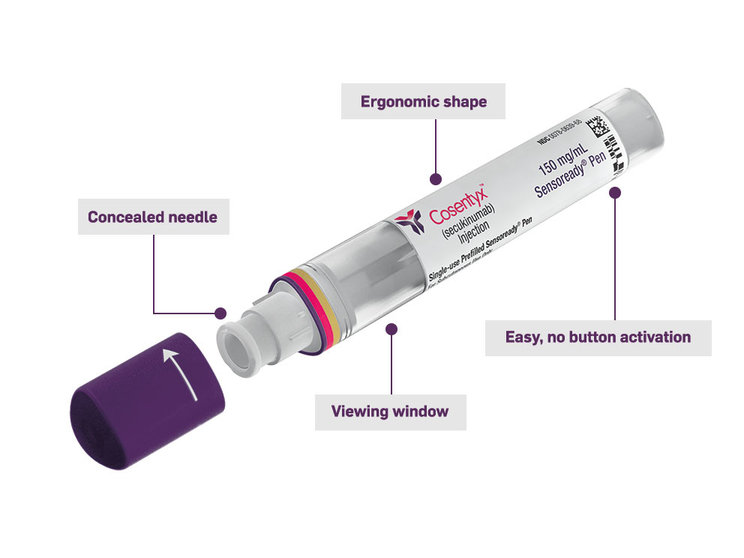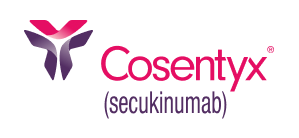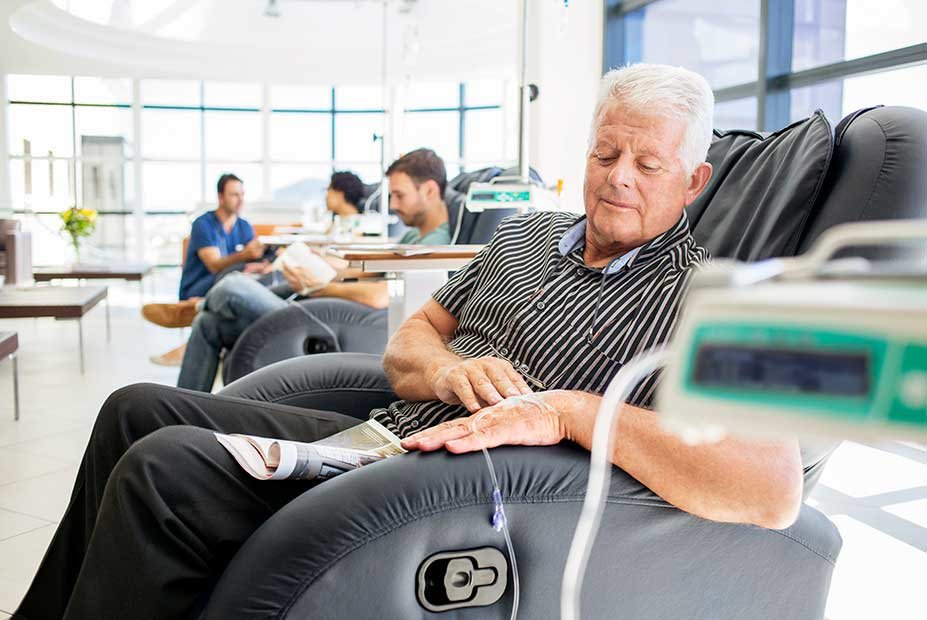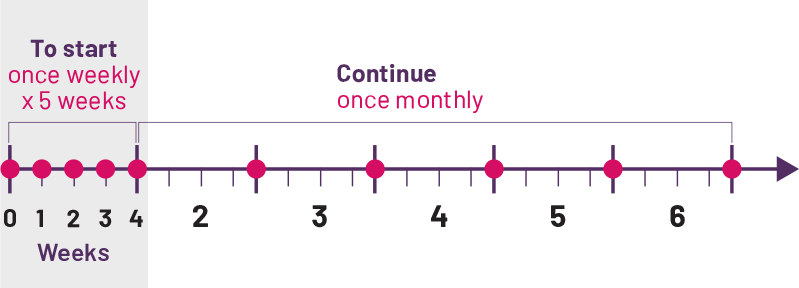For adults with active non-radiographic axial spondyloarthritis

TAKING COSENTYX® (secukinumab) FOR
NON-RADIOGRAPHIC AXIAL SPONDYLOARTHRITIS
The first and only treatment to offer both self-injection and IV infusion dosing options that target IL-17A.
If you have any questions about your condition or how to take COSENTYX, talk to your doctor to decide if COSENTYX is right for you.
IV Infusion
COSENTYX is available through IV infusion
Cosentyx offers an additional treatment delivery option based on your weight through a monthly, 30-minute infusion. Plus, each infusion is administered by a healthcare provider at an infusion center, so you have support available to you during the process.
COSENTYX does not require any medications (such as antihistamines) to be administered before or after your infusion.
What to expect with COSENTYX taken through an IV
You will be given COSENTYX by a healthcare provider through a needle placed in your vein (infusion). It takes about 30 minutes to give you the full dose of COSENTYX.
Your healthcare provider will tell you how often you should receive COSENTYX.
If you miss an appointment to receive COSENTYX, make another appointment as soon as possible.
Preparing for your COSENTYX infusion
Talk to your healthcare provider about what to expect, as each infusion center may be different.
Here are a few considerations when preparing for your infusion.
Before arriving at the infusion center:
Hydrate well
Dress comfortably
Bring something to entertain yourself
During your infusion, your healthcare provider may:
Check your vital signs
Ask you some questions
Answer any questions you may have
Once your infusion is complete:
Schedule your next infusion
If you miss an appointment to receive COSENTYX, make another appointment as soon as possible
During your COSENTYX infusion
Your 30-minute infusion will be delivered while you remain seated. Others have found that it helps the time to go by faster by creating a routine or ritual that's unique to their experience. Here are a few ideas:
Listen to a favorite playlist or podcast
Read a book
Scroll through social media
Play a game
Catch up on emails
Self-Injection
Convenient once-a-month self-dosing†
Taking COSENTYX once a month helps you have fewer interruptions in your daily routine. Just 1 convenient monthly dose of COSENTYX may help relieve symptoms of non-radiographic axial spondyloarthritis (nr-axSpA).
To start, your doctor may prescribe something called a loading dose, which means you start with 5 weekly doses. After you complete the loading dose, you will take COSENTYX once per month. Your doctor will determine if the loading dose is right for you.
Your rheumatologist may prescribe COSENTYX with or without methotrexate.
The recommended dose is 150 mg, which is taken as 1 injection under the skin. COSENTYX is injected with the Sensoready® Pen or a Prefilled Syringe. Do not try to inject COSENTYX yourself. Your healthcare provider should show you how to inject COSENTYX before using it for the first time.
Learn more about our devices and watch step-by-step videos on how to take COSENTYX.
†Monthly dose equals 1 dose every 4 weeks.
The Sensoready Pen is designed for comfortable use

Concealed needle
You can self-inject safely and confidently
Viewing window
The green indicator assures you that your injection has been completely delivered
Easy, no-button activation
Automatic 2-click technology allows you to hear when your dose starts and finishes
Ergonomic shape
Learn more about how to use the Sensoready Pen and about COSENTYX in the Prefilled Syringe.
Very few people in clinical trials (2.6%) experienced injection-site reactions with COSENTYX.‡
‡Results from a non-radiographic axial spondyloarthritis clinical trial at week 52.
Find out why people are using the Sensoready Pen:
More than 90% of people reported no pain or reaction during or after the injection
Nearly 9 out of 10 people reported being satisfied or very satisfied with self-injection using the Sensoready Pen§
Download this handy brochure with instructions and tips so you have it whenever you need it.
§In a study of patients with active psoriatic arthritis.



